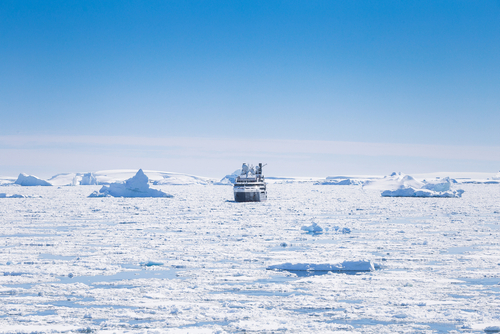Marlink published a report on the current status and future outlook for satellite capacity and connectivity based on vessel activity in the polar regions. The report finds that demand for high-quality data connectivity in the polar regions is set to increase.
The report examines vessel demand in the context of the post-pandemic bounceback and includes data and insights from industry experts on how the market will evolve in the medium term.
The findings point that demand for high-quality data connectivity in the polar regions will increase as specialist and mainstream cruise operators expand sailings to meet growing demand.
This is in contrast to merchant shipping, while government activity is also showing growth.
What is more, a post-COVID bounce-back in cruise passengers is predicted in Arctic cruising, with forecast data for Norwegian domestic cruise traffic in 2022 predicting an increase compared to actual numbers in 2019.
International cruise operators may start sending more conventional ships to the region as they seek to expand sailing schedules and fill passenger berths
the report said.
In addition, the trend towards more leisure traffic will see additional growth in bandwidth demand, with large ‘floating village’ cruise ships consuming more Ka-, Ku- and C-band satellite capacity with some also adopting non-geostationary (NGSO) services once they become available.
Expedition cruise operators with itineraries above 80 degrees latitude north will likely pursue a strategy focussed on NGSO services with L-band back-up, the report finds.
The increase in demand will spur steady growth in Ku- and Ka-band satellite bandwidth demand between 65 and 80 degrees latitude where large conventional cruise ships are likely to operate and a potential boom in NGSO bandwidth at more extreme latitudes between 80 and 90 degrees.
The scale of the polar connectivity challenge is considerable but so is the opportunity and we think that the situation could change quickly from scarce bandwidth to fresh capacity that will support safer operations and higher frequency of reporting
stated President, Maritime, Marlink, Tore Morten Olsen.
Furthermore, another study on connectivity, conducted by Inmarsat, found that data usage on commercial maritime vessels has jumped more than threefold since 2019.
In fact, the internal study reveals that maritime demand has continued to rise as commercial shipping recovers following the peak of the COVID-19 pandemic – with data usage among Inmarsat maritime customers rising almost 70% in the 12 months to mid-2022.
Analysis of data usage by vessel operators shows year-on-year demand for data was highest among container shipping companies, more than doubling (108%) in June 2022 compared to June 2021, while use of connectivity increased by 70% among oil tanker operators and by 47% on bulk carriers over the same period.































































